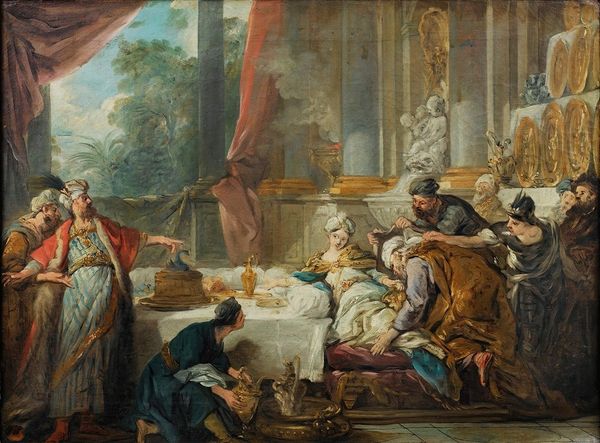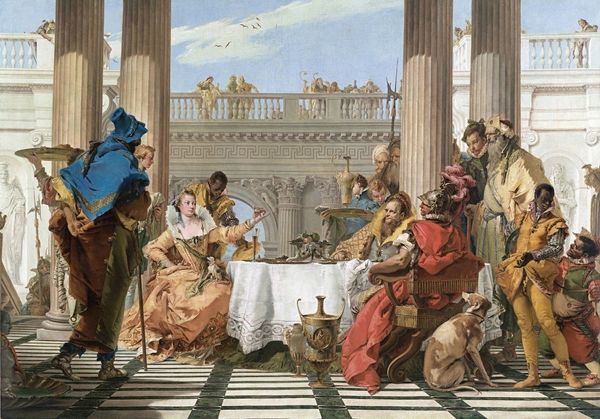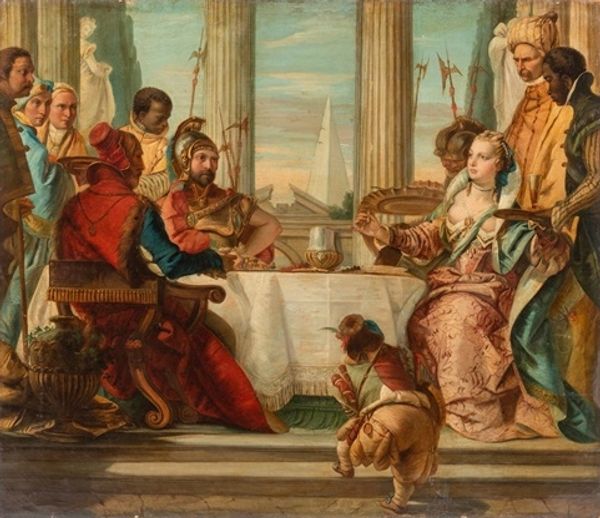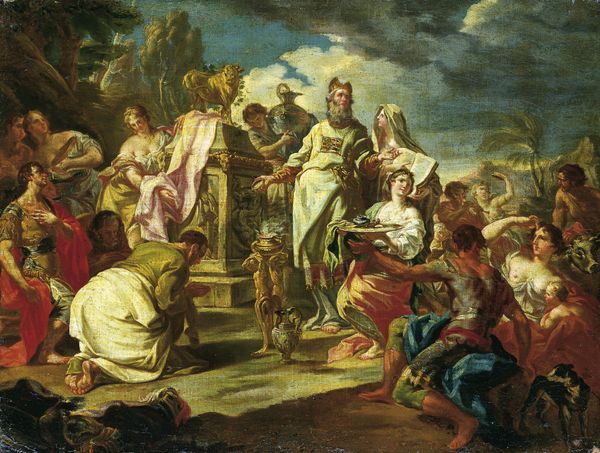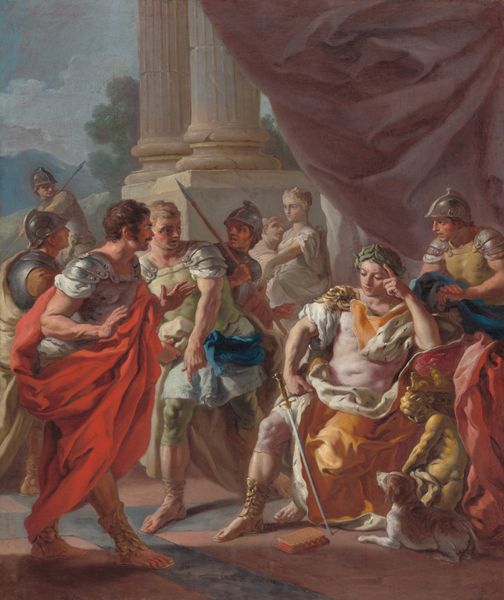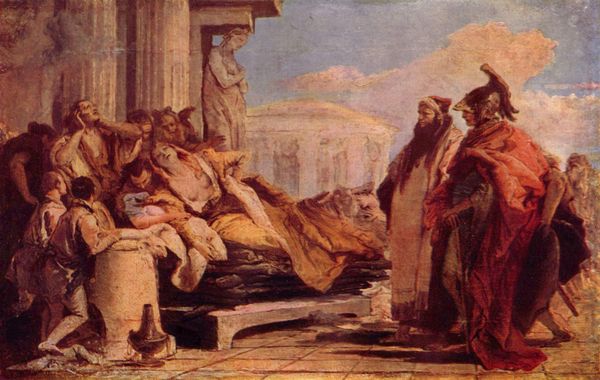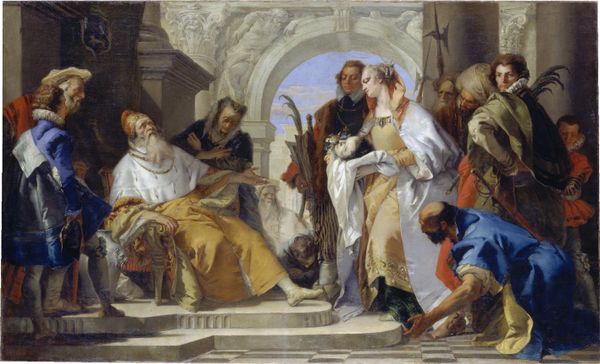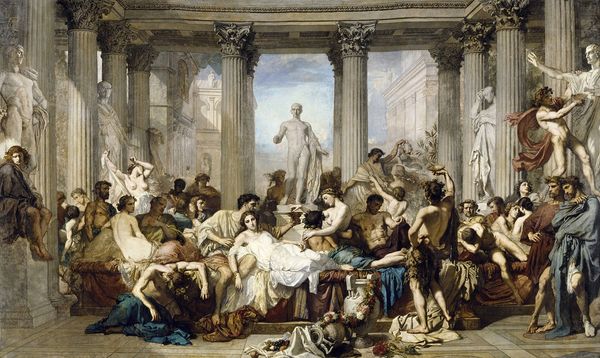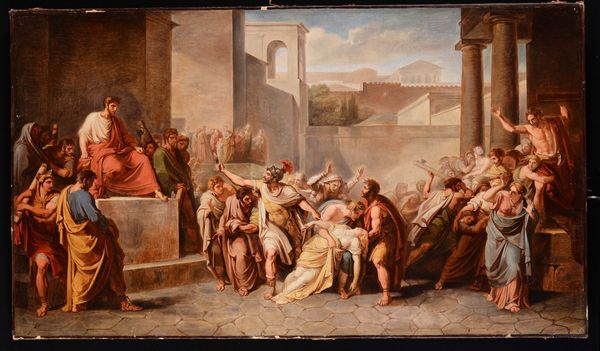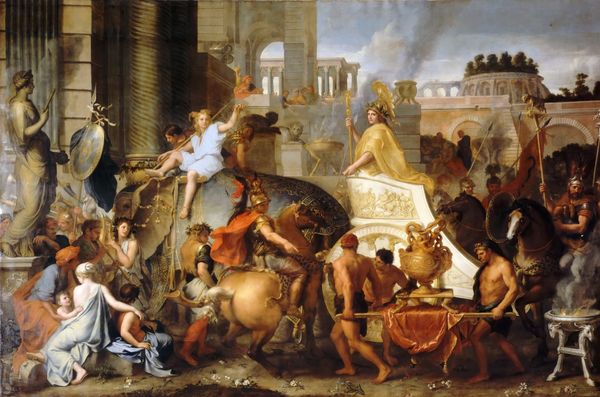
painting, oil-paint
#
portrait
#
baroque
#
painting
#
oil-paint
#
figuration
#
oil painting
#
genre-painting
#
history-painting
Copyright: Public Domain: Artvee
Curator: What strikes me immediately is the incredible energy captured in this gathering! The textures are so lively. Editor: Indeed. This painting is called "The Meal of Esther and Ahasuerus" by Jean-François de Troy. While it is unsigned and undated, we believe that this piece comes from his earlier years, painted using oil on canvas. Curator: The table becomes a literal stage for human drama here. Food, yes, but also intrigue. What an inspired detail to include a dog under the table; a silent, perceptive observer of courtly machinations! Editor: Absolutely. It encapsulates so much about power dynamics and gender roles in a particular social context. We have Esther, a Jewish woman, concealing her identity as she pleads with her husband, the Persian King Ahasuerus, to save her people from annihilation. A truly vulnerable, and politically shrewd position. Curator: Consider, too, how Esther’s story mirrors so many tales of hidden identity and secret influence in female narratives throughout history. I wonder if its potency as an archetype draws on the symbolic associations we make between "hiding" and potential danger, or even the transformation into power. Editor: The setting itself becomes so important here: look at how this banquet functions almost as a carefully constructed facade. Underneath this feast lies layers of negotiation and concealed threats. It calls into question, whose narratives are amplified and whose are suppressed. Curator: The architectural details – those spiraling columns and the suggestion of gardens – act as visual signifiers of not only regal grandeur, but even aspiration itself. Notice, too, the symbolic positioning of Ahasuerus almost dead-center within the pictorial space; literally placed to represent "supreme control." Editor: Do you really think he's so much in control? Look closer at his reaction, there is shock and surprise. De Troy's work is far more concerned with those operating just on the fringes of the patriarchy, in the shadow of the king’s power. Those are places of marginality, perhaps, but also real possibility. Curator: Yes, it appears, a lot can happen on the margins of any historical setting... Editor: Indeed! Perhaps this invites reflection on how power and visibility shape how we engage with historical events, both through artwork, and real-life conditions.
Comments
No comments
Be the first to comment and join the conversation on the ultimate creative platform.
